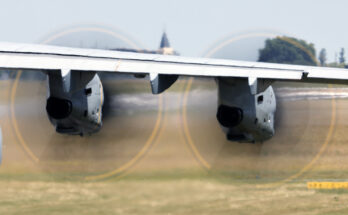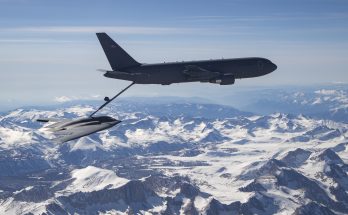By Derek Bisaccio, former FI International Military Markets – Eurasia analyst and guest blogger.

An imperfect trial balloon recently launched by SpaceX CEO Elon Musk puts a spotlight on an important question regarding the war in Ukraine: How exactly does the conflict end? The billionaire entrepreneur suggested a referendum be held throughout the Ukrainian regions that Russia recently annexed, with the additional stipulation that this time, the referendum be conducted under the supervision of the United Nations.
Ukraine-Russia Peace:
– Redo elections of annexed regions under UN supervision. Russia leaves if that is will of the people.
– Crimea formally part of Russia, as it has been since 1783 (until Khrushchev’s mistake).
– Water supply to Crimea assured.
– Ukraine remains neutral.
— Elon Musk (@elonmusk) October 3, 2022
As plenty of users on the website that Musk will soon purchase pointed out, all of these regions voted for independence back in the 1990s, during the break-up of the Soviet Union. None clamored to join Russia until Russian troops started showing up in Ukraine from 2014 onward. Redoing the vote now, under war-time conditions, would in essence make the U.N. complicit in legitimizing a war of conquest, which runs contrary to its founding principles.
So unsurprisingly, the Ukrainian government was swift to shoot down Musk’s proposal. Kyiv’s stance has remained constant: The war ends when Russia withdraws its troops from Ukrainian soil. Given that, at the moment, the Ukrainian military has the edge in combat operations, its government sees no reason to cede its advantage as it works to recapture lost ground. Ukrainian troops have performed well against the numerically superior Russian military and, augmented with Western kit, have begun to take back territory lost to Russia early on in the war.
Besides the domestic blowback that Ukrainian President Volodymyr Zelensky would face should he cut the offensive short – particularly after his troops have uncovered mass evidence of Russian war crimes – his government suspects that Russia would utilize a ceasefire as a breather to regroup its battered forces to fight another day. This exact scenario happened repeatedly from 2014 to early 2015 as Ukraine agreed to ceasefires that the separatists later violated. The newly confident Ukrainian military sees no reason to make those mistakes again.
The war could be over in a day should Russia cease operations and withdraw. This is Ukraine’s stance, and also the opinion of its partners in the West. “The way out of the conflict is for Russia to leave Ukraine,” as Finnish Prime Minister Sanna Marin put it recently. Thus, until it meets a real impediment to its offensive operations, Ukraine will continue to press for a military resolution to the war that sees it gain its territory back through sword, not gamble on a potential outcome from pen.
Moscow, which launched the war in the first place, has for its part put itself in a bind that makes backing down difficult. The war is not popular for many in Russia, but President Vladimir Putin is more worried about the reactions from the folks who do support the war, as they are beginning to voice doubts in the manner in which the war has been conducted, believing that incompetence from the leadership sapped the military’s effectiveness.
For Putin, that comes uncomfortably close to criticism of him personally. Putin spent decades consolidating his personal power in Russia, cracking down on powerful business elite outside of his orbit and filling the core government agencies with loyalists with whom he had close connections. Political dissidents who speak out against his rule have been harassed, imprisoned, or assassinated. He also spent this time attempting to restore Russia’s standing as a great power, and had found plenty of success in this area in the 2010s, revitalizing the military and carrying out a series of operations from Ukraine to Syria that had NATO talking about the “Russia threat” again.
All of that has fallen apart in less than a year. Russia’s military initially found success in Ukraine after it launched its “Special Military Operation” on February 24. Russian troops advanced along multiple fronts, even prompting assessments from Western intelligence agencies that they would imminently take the capital, Kyiv. This did not happen, and in the months since, Ukraine first halted and has now reversed Russian gains, exposing the flaws in the Russian military machine and exploiting poor coordination between Russian units.
Putin may not end up facing a coup over his disastrous handling of the war, but it is fair to say that the risk for him now is higher than it has been for years, and that risk comes from the same nationalists he cultivated for so long and who are increasingly furious with the way the conflict has played out. So, faced with the setbacks, Putin has doubled down, rather than looked for the exit. In September he announced a partial mobilization. He has leaned more heavily on the nuclear deterrent against NATO, and even gone further, suggesting that Russia could use tactical nuclear weapons on the battlefield with Ukraine.
Although on the defensive, Russia’s leadership recognizes that there is a core vulnerability in the Ukrainian military at the moment, that being its necessary reliance on Western military hardware. Russia has not been, and likely will never be, able to break the Ukrainian spirit, but at this stage, Moscow aims to inhibit the effectiveness of Ukraine, which means pressuring the U.S. and its European allies over the supply of arms to Ukraine.
This is where the nuclear threats come in – upping the stakes in a way that raises Western uncertainties about the impact of further arms deliveries to support the war effort. If one were to be a gambler, a bet on nuclear war in any year after the creation of the weapons would have come up empty, so history suggests we avoid a conflict on that sort of scale. But, that U.S. President Joseph Biden has warned recently of “armageddon” indicates quite clearly that these Russian threats are being heard in Washington, which has been Ukraine’s top external backer.
The nuclear card and the additional troops being rushed to the front are furthermore intended to, if nothing else, maintain the wartime status quo into the winter months, when Europe in particular is set for rough times over spiking energy prices. Moscow will offer that it can turn the taps back on, but the price is for European powers to turn a cold shoulder to Kyiv or at least start calling for the conflict’s end.
When it comes to bringing a conflict to a close, the academic literature points to |ripeness.” Is a conflict ripe for the sort of negotiations that can lead to a resolution? The circumstances at this stage with respect to the war in Ukraine suggest no, at least not right now. Ukraine’s military has a chance to win back its land, while Russia suspects it can force Ukraine’s benefactors to rug-pull the defenders, potentially tilting the advantage back to Russia and enabling it to resume offensive operations. It will take a substantial shift in these dueling perspectives to bring the parties away from warfare and back to the table.
With a geographic purview that includes the states of the former Soviet Union as well as Afghanistan and Pakistan, Forecast International’s International Military Markets – Eurasia service covers a multifaceted security environment characterized by energy politics and conflict flashpoints. Eurasia serves as a convergence point for Russia’s assertive foreign policy, growing Chinese influence, latent Islamic fundamentalism, and U.S. and European efforts to ensure access to burgeoning energy markets. International Military Markets – Eurasia offers analytical insight into the complex geopolitical and economic realities of these emerging markets. Click here to learn more.
For 50 years, Forecast International intelligence reports have been the aerospace and defense industry standard for accurate research, analysis, and projections. Our experienced analysts compile, evaluate, and present accurate data for decision makers. FI's market research reports offer concise analysis of individual programs and identify market opportunities. Each report includes a program overview, detailed statistics, recent developments and a competitive analysis, culminating in production forecasts spanning 10 or 15 years. Let our market intelligence reports be a key part of reducing uncertainties and mastering your specific market and its growth potential. Find out more at www.forecastinternational.com



